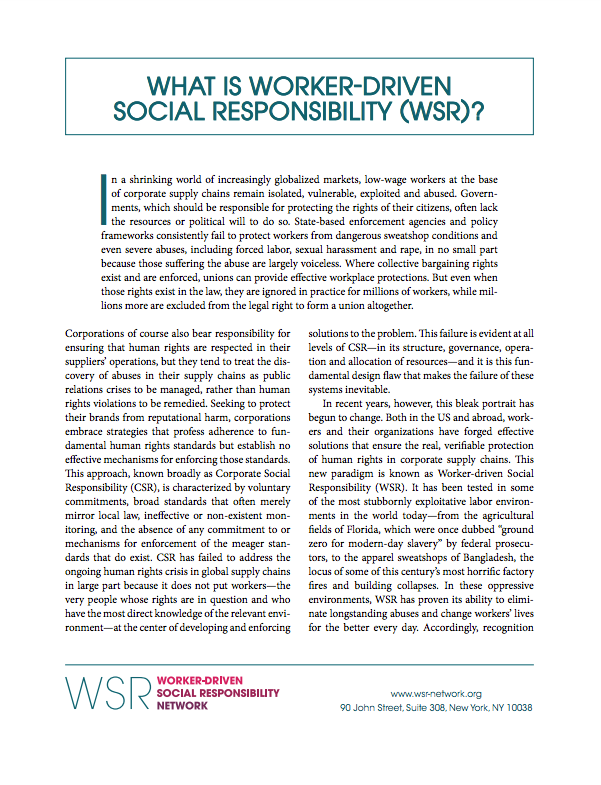What is Worker-driven Social Responsibility?

In a shrinking world of increasingly globalized markets, low-wage workers at the base of corporate supply chains remain isolated, vulnerable, exploited, and abused. Governments, which should be responsible for protecting the rights of their citizens, often lack the resources or political will to do so. State-based enforcement agencies and policy frameworks consistently fail to protect workers from dangerous sweatshop conditions and even severe abuses, including forced labor, sexual harassment and rape, in no small part because those suffering the abuse are largely not heard. Where collective bargaining rights exist and are enforced, unions can provide effective workplace protections. But even when those rights exist in the law, they are ignored in practice for millions of workers, while millions more are excluded from the legal right to form a union altogether.
In recent years, however, this bleak portrait has begun to change. Both in the US and abroad, workers and their organizations have forged effective solutions that ensure the real, verifiable protection of human rights in corporate supply chains. This new paradigm is known as Worker-driven Social Responsibility (WSR). It has been tested in some of the most stubbornly exploitative labor environments in the world today—from the agricultural fields of Florida, which were once dubbed “ground zero for modern-day slavery” by federal prosecutors, to the apparel sweatshops of Bangladesh, the locus of some of this century’s most horrific factory fires and building collapses. In these oppressive environments, WSR has proven its ability to eliminate longstanding abuses and change workers’ lives for the better every day. Accordingly, recognition of this new paradigm is increasingly widespread, and supporting it is now a moral and functional necessity.
In order to achieve meaningful and lasting improvements, labor rights programs in corporate supply chains must be worker-driven, enforcement focused, and based on legally binding commitments that place responsibility for improving working conditions on the global corporations at the top of those supply chains. Read more about the key characteristics of the worker-driven social responsibility model.
Additional Resources
 What_is_WSR_email
What_is_WSR_email
